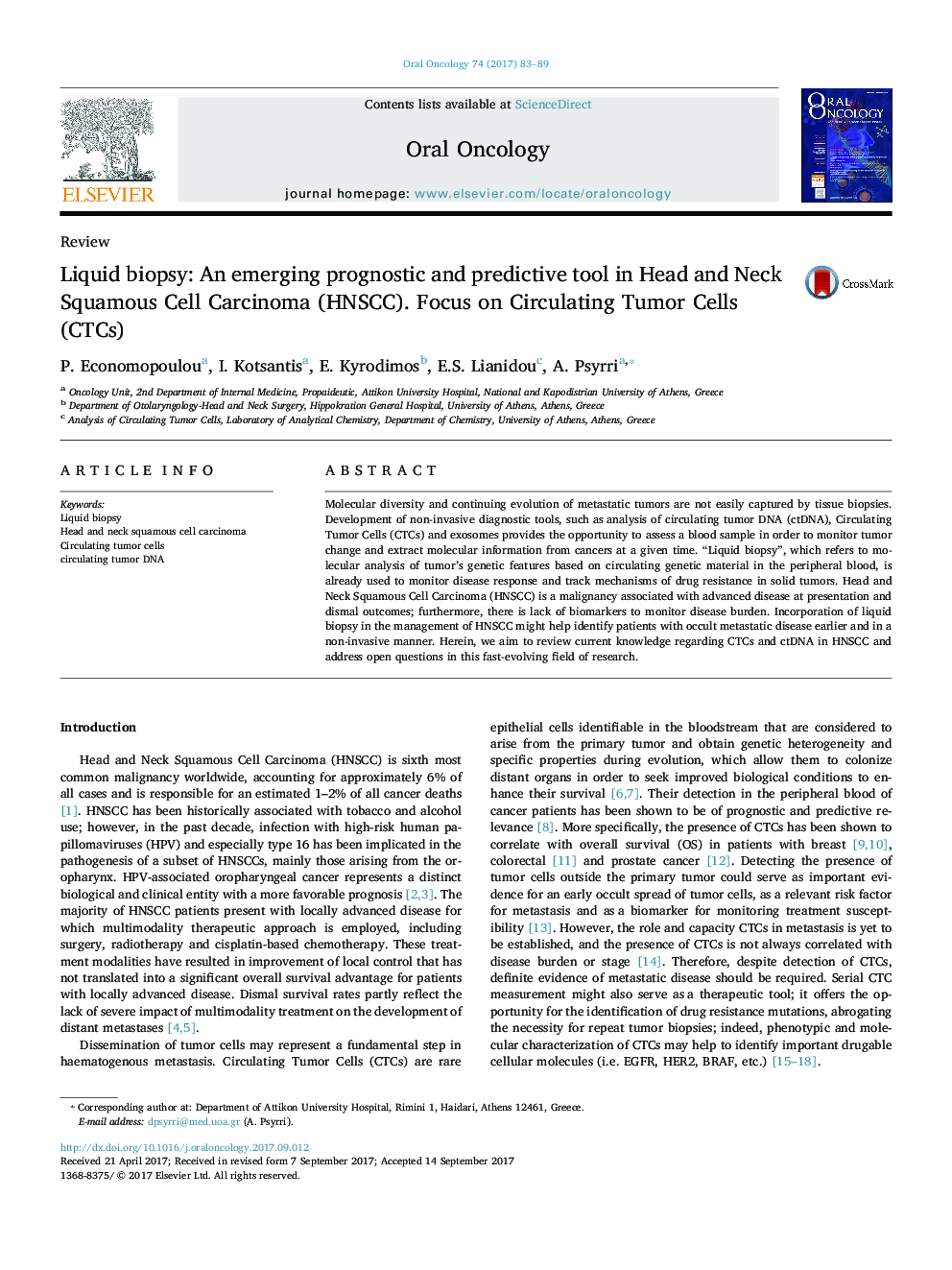| Article ID | Journal | Published Year | Pages | File Type |
|---|---|---|---|---|
| 5642433 | Oral Oncology | 2017 | 7 Pages |
Abstract
Molecular diversity and continuing evolution of metastatic tumors are not easily captured by tissue biopsies. Development of non-invasive diagnostic tools, such as analysis of circulating tumor DNA (ctDNA), Circulating Tumor Cells (CTCs) and exosomes provides the opportunity to assess a blood sample in order to monitor tumor change and extract molecular information from cancers at a given time. “Liquid biopsy”, which refers to molecular analysis of tumor's genetic features based on circulating genetic material in the peripheral blood, is already used to monitor disease response and track mechanisms of drug resistance in solid tumors. Head and Neck Squamous Cell Carcinoma (HNSCC) is a malignancy associated with advanced disease at presentation and dismal outcomes; furthermore, there is lack of biomarkers to monitor disease burden. Incorporation of liquid biopsy in the management of HNSCC might help identify patients with occult metastatic disease earlier and in a non-invasive manner. Herein, we aim to review current knowledge regarding CTCs and ctDNA in HNSCC and address open questions in this fast-evolving field of research.
Keywords
Related Topics
Health Sciences
Medicine and Dentistry
Dentistry, Oral Surgery and Medicine
Authors
P. Economopoulou, I. Kotsantis, E. Kyrodimos, E.S. Lianidou, A. Psyrri,
